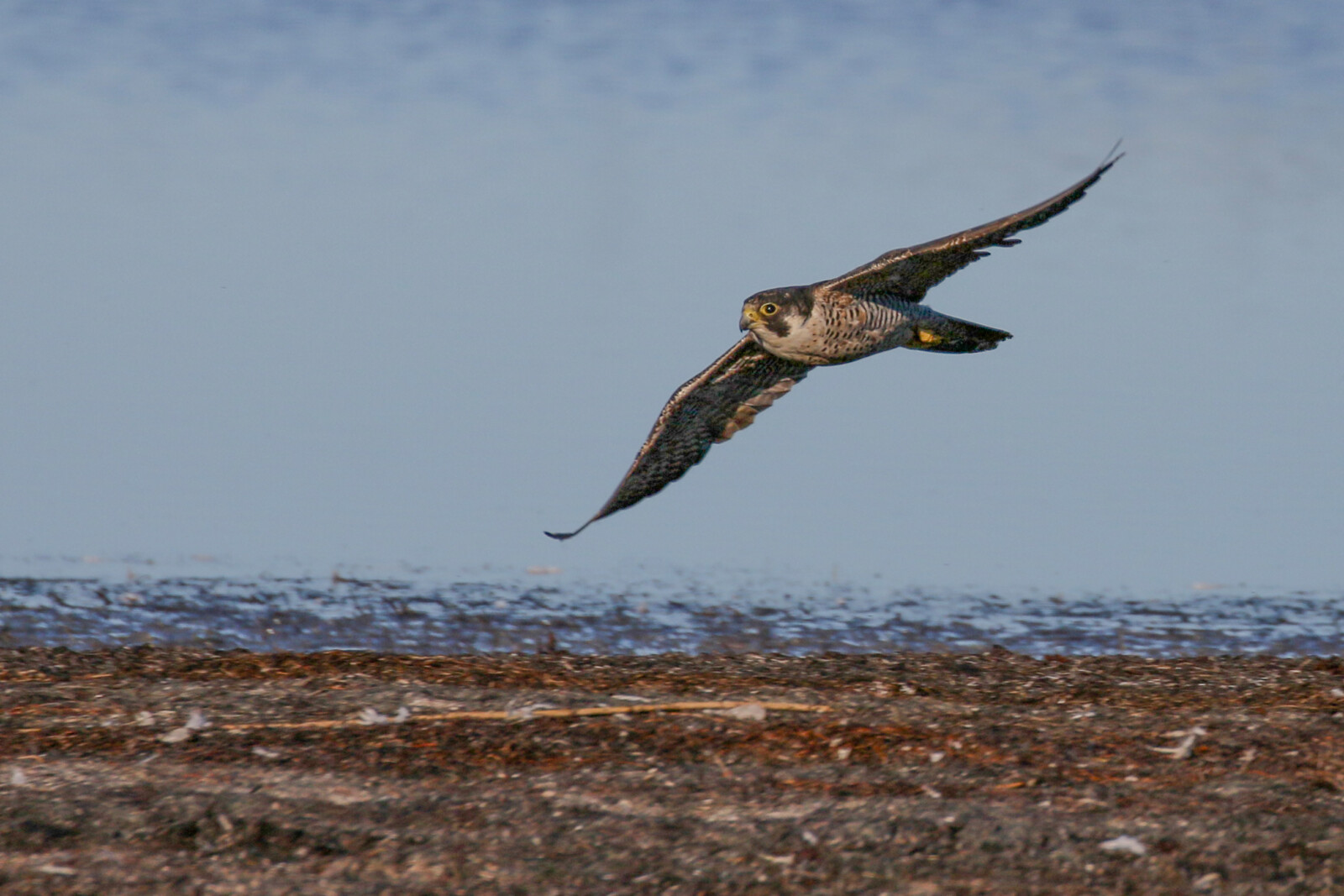Peregrine falcon
Peregrine falcon. Photo: Kauro Kuik
Introduction
Latin Falco peregrinus Tunst.
Estonian Rabapistrik
Also known as: no known names
Status in Estonia
Non-breeding summer and migratory bird.
Description
The peregrine falcon is a strong, bulky, muscular and broad-breasted bird. The wings are pointed, the wing bend is quite wide and the tail is of medium length. It has a gliding flight with fast, relatively low wing beats. The adult bird’s top side is slate grey, with a paler bluish-grey back, preen gland area and tail coverts. The underside is white, with a lot of thin black stripes across the lower breast and entire belly. The upper chest, under the throat and the side of the neck are all white with no pattern, creating a stark contrast with the black ‘hood’ and wide beard stripe. The juveniles are distinguished by their wide striped lower body and brown top side as well as their light thinly striped wing covers.
Size
Male body length 38–45 cm, female body length 46–51 cm. Male wingspan 89–100 cm, female wingspan 104–113 cm, male body mass 580–750 g, female body mass 950–1100 g.
Similar species
Merlin, gyrfalcon.
Distribution
It was common across the world until the middle of the twentieth century, but the number has now dropped to a critical level. It no longer breeds in Estonia.
Population
It does not breed in Estonia.
Occurrence in Estonia
It arrives in the second half of March and usually departs in the second half of September. In some rare cases, peregrine falcons have been spotted in the winter, although it is unclear whether they are the same as those who also live here during the summer.
Diet
It hunts birds in the air, either by chasing them in a fast horizontal flight or by swooping down from on high with its wings folded. It has a preference for specific species, such as pigeons, crows and ducks.
Habitat
It nests on coastal cliffs or mountains as well as on large open raised bogs in the taiga zone. Its hunting area is often separate from the breeding area and can also include the sea coast and lakes.
Nesting
It does not breed in Estonia. The nest is built on a cliff, less frequently in a tree in larger abandoned bird nests, or on the ground (in the taiga zone). The female bird lays 2–4 eggs with a pale shell and reddish-brown spots towards the end of April or early May. The chicks hatch in late May and can fly by mid-July. The brood might stay together until August.
Conservation status and protection
It belongs to the protected bird species of category I. As an apex predator, it is endangered by the use of plant pesticides and insecticides as well as the loss of suitable nesting grounds.
Distribution and population in Lääne County
The peregrine falcon is an uncommon migratory bird in Lääne County. It can be seen here in the autumn, between September and October, and less frequently in May during the spring migration. Peregrine falcons frequently hunt waders and smaller ducks that eat on beach meadows and along the water’s edge.
They are most commonly found in Haeska, Põgari and Cape Puise. The peregrine falcon nested in Marimetsa Bog in Lääne County in the middle of the twentieth century, but no evidence of nesting has been found in the current century.
